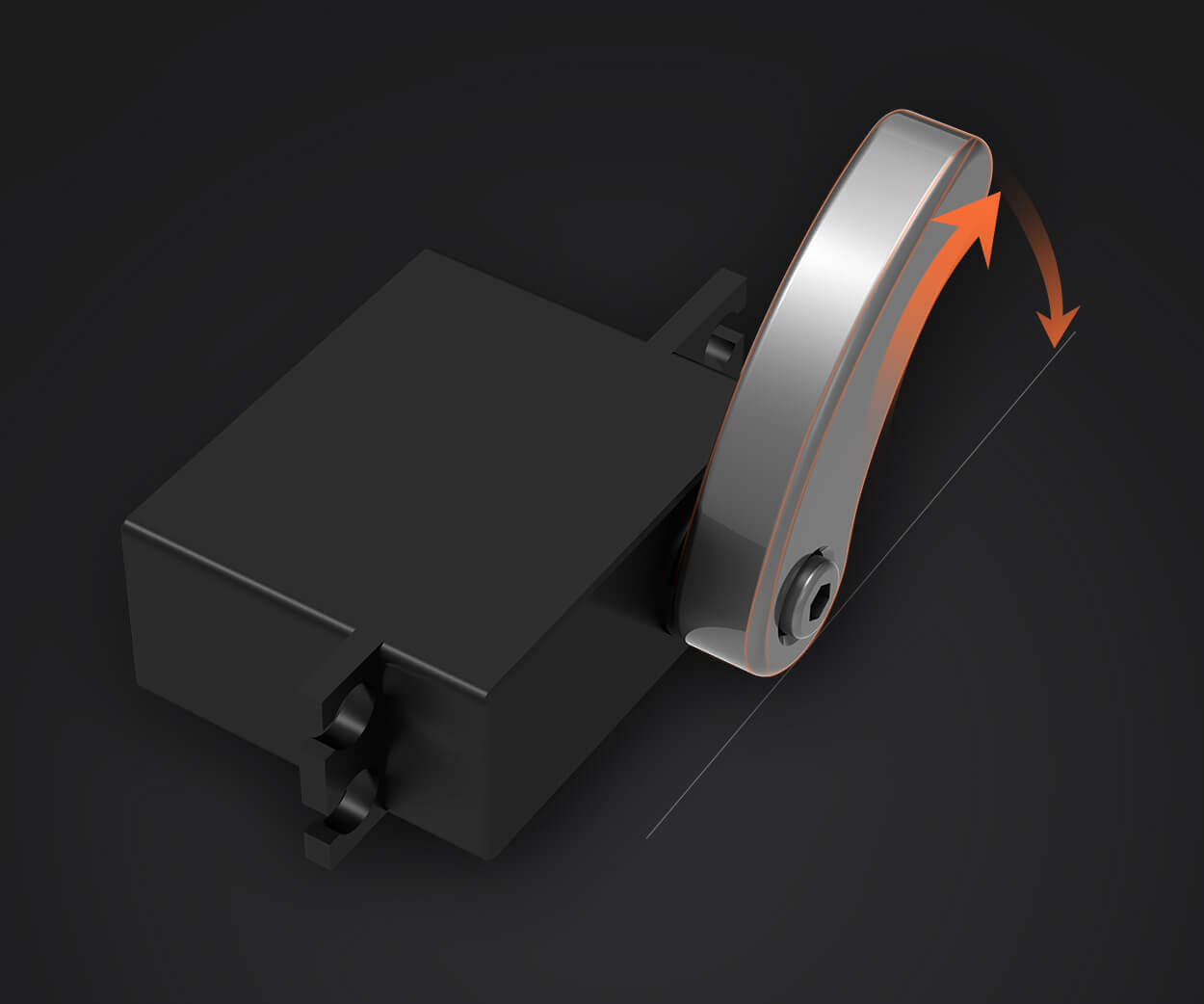Diving Into the World of Servo Motors: What Are They?
Servo motors are the heartbeat of precise motion control systems. They're essential in robotics, CNC machinery, automation, and more, capable of controlling angular or linear position, velocity, and acceleration with high accuracy. Unlike regular motors, servo motors are designed with built-in feedback mechanisms, allowing them to perform complex, highly controllable movements.

At the core, servo motors are categorized based on their power source: AC (Alternating Current) or DC (Direct Current). Though they serve similar fundamental purposes — delivering precise control — their designs, functionalities, and applications differ significantly. To understand these distinctions, let's explore what each type encompasses.
The Anatomy of AC and DC Servo Motors
AC Servo Motors: These are typically asynchronous (induction) or synchronous motors tailored for servo applications. They operate directly from AC power supplies and usually require specialized control drives. AC servo motors are appreciated for their durability, efficiency, and ability to operate at high speeds without brushes or commutators.
DC Servo Motors: DC servo motors run on direct current, usually supplied via batteries or rectified AC sources. They are more straightforward in design, utilizing brushes and commutators for reversing current in the motor windings, which simplifies control in many scenarios. Their simplicity often translates into precise control at low to moderate speeds.
Operational Principles
AC Servo Motors: These motors function based on the principles of electromagnetism with a stator producing rotating magnetic fields. The rotor, which can be a squirrel cage (as in induction motors) or a permanent magnet (as in synchronous motors), follows the frequency and amplitude of the AC supply, controlled by sophisticated inverters or drives.
DC Servo Motors: DC motor operation depends on the interaction of magnetic fields created by the stator and rotor current. When voltage is applied, the motor generates torque proportional to the armature current. The commutator and brushes switch the current direction, maintaining continuous rotation and allowing precise control.
Design and Construction Differences
AC Servo Motors:
Typically consist of a wound stator (stator winding) and a rotor that could be a permanent magnet or squirrel cage. Use electronic controllers to modulate the frequency and voltage supplied to the motor. Do not have brushes, minimizing maintenance. Offer high-speed operation and excellent durability.
DC Servo Motors:
Feature a wound armature (rotor) and a field winding or permanent magnets. Utilize brushes and a commutator for switching the current. Are easier to control with simple pulse-width modulation (PWM) techniques. Are inherently suited for applications requiring precise low-speed operations.
Control Systems and Drive Electronics
AC Servo Systems: Utilize advanced inverters and control algorithms like Field-Oriented Control (FOC) or Sinusoidal Vector Control. These systems precisely adjust the frequency, amplitude, and phase of the supply to the motor, allowing for smooth velocity and position control.
DC Servo Systems: Often rely on simpler circuitry, employing PWM controllers or linear regulators. The control can be as straightforward as adjusting the armature voltage or field current, making them easier to implement but slightly less flexible at extremely high speeds.
Advantages and Limitations: Why Choose One Over the Other?
Advantages of AC Servo Motors:
Durability: No brushes or commutators mean less wear-and-tear. High-Speed Operation: Capable of running at higher speeds with excellent stability. Maintenance: Require less maintenance and are more reliable in harsh environments. Efficiency: Generally more energy-efficient, especially at high speeds.
Limitations of AC Servo Motors:
Complex Control Electronics: Require sophisticated drivers, which can be costly. Initial Cost: Typically higher upfront investment. Size and Weight: Can be more cumbersome due to their robust construction.
Advantages of DC Servo Motors:
Simple Control: Easy to regulate torque, speed, and position with basic circuitry. Cost-Effectiveness: Usually less expensive initially. Excellent at Low-Speed Operation: Offer precise control even at very low speeds, ideal for robotics and positioning applications. Fast Response: Rapid acceleration and deceleration capabilities.
Limitations of DC Servo Motors:
Maintenance Needs: Brushes and commutators wear out over time, requiring replacement. Lower Speed Limits: Not as efficient or stable at very high speeds. Less Suitable for Harsh Environments: Brushed motors are more susceptible to dust, dirt, and moisture.
Application Considerations
Where AC Servo Motors Shine:
Industrial automation requiring high speed and durability (e.g., conveyor belts, pumps) Robotics where high reliability is essential CNC machinery demanding fast, accurate movement over long periods
Where DC Servo Motors Excel:
Precise positioning in robotics and camera systems Small-scale automation or applications where quick response at low speeds is critical Cost-sensitive projects that need straightforward control mechanisms
Choosing the Right Motor: Factors to Weigh
When deciding between AC and DC servo motors, it’s invaluable to consider:
Application Speed and Torque Requirements: High-speed, high-torque systems may favor AC, while low-speed precision tasks may benefit from DC.
Environmental Conditions: Harsh or dirty environments favor AC motors due to lower maintenance.
Budget Constraints: DC motors often cost less initially but may incur higher maintenance costs over time.
Control System Complexity: If your project can handle sophisticated electronics, AC servo motors provide higher performance; otherwise, DC motors are simpler.
Future Trends and Innovations
Both types of servo motors are evolving with new technologies:
Brushless DC (BLDC) Motors: Combine the advantages of DC motors with brushless designs, offering high efficiency, durability, and precise control, making them increasingly popular.
Advanced AC Drive Technologies: Better controllers and algorithms are making AC servo motors more accessible and easier to integrate.
In summary, understanding the fundamental differences between AC and DC servo motors involves examining their construction, control, advantages, limitations, and application environments. Selecting the right one hinges on your specific operational demands, environmental considerations, and technical expertise. Both serve vital roles in the modern landscape of automated systems, robotics, and industrial machinery — each offering unique strengths tailored to different needs.
Leveraging innovations in modular drive technology, Kpower integrates high-performance motors, precision reducers, and multi-protocol control systems to provide efficient and customized smart drive system solutions.




































